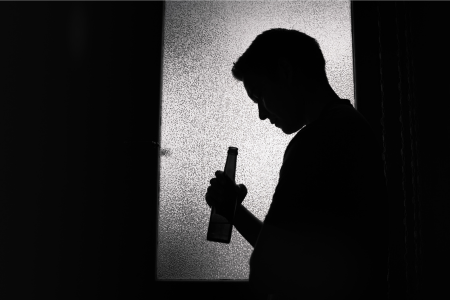News & Research on Psychology | ShareYrHeart
Mouse models of juvenile orgy drinking uncover key long-lasting brain changes
Published
11 months agoon
By
ShareyrheartSummary : Mouse models of juvenile orgy drinking uncover key long-lasting brain changes. Overwhelming liquor utilization may cause lasting dysregulation of neurons, or brain cells, in teenagers, according to a modern study in mouse. The discoveries propose that introduction to binge-levels of liquor amid puberty. When the brain is still growing, can cause lasting changes in how the brain signals and communicates. This can lead to long-term changes in behavior and affect how people think when they drink.
Source : Penn State

Research papers
“What they’re seeing here,” said Nikki Crowley, right-hand teacher in science and biomedical building and Huck Early Chair in Neurobiology. Neural Building, “is that on the off chance that pre-adult orgy drinking thumps neurons off this direction. They might not be able to urge back, indeed if the alcohol utilization stops.”
The prefrontal cortex could be a key brain locale for official work, chance appraisal, and decision-making. According to Crowley, it’s not completely shaped in young people and is still developing in people until around age 25. Disturbances to its improvement in youthful individuals may have genuine and long-lasting results, including Crowley.
Drinking too much alcohol is dangerous for everyone and should be avoided. However, young people’s brains seem to be especially vulnerable to the consequences, which can have long-lasting effects, Crowley said.
The group, driven by Avery Sicher, a doctoral understudy in Penn State’s neuroscience program. Used a show of youthful ethanol introduction in mouse to see how distinctive populations of neurons within the cortex. The farthest layer of the brain, are changed by deliberate ethanol utilization. In this show, mice are known to expend liquor in designs that surmise human fling drinking, characterized by the National Establishment on Liquor Mishandle and Liquor Addiction as a design of liquor utilization that leads to a blood alcohol concentration of 0.08% or higher, as a rule, in approximately two hours. Fling drinking is considered one of the most unsafe forms of liquor abuse. Understanding its effect on the brain can offer assistance in treatment.
Mouse model research
Sicher and her colleagues gave mice access to liquor for a 30-day period. Due to their speedier advancement and shorter life expectancy, this compared generally to ages 11–18 in humans for a long time. At that point, they looked at the electrophysiological properties of distinctive neurons all through the prefrontal cortex to understand how juvenile fling drinking affected the wiring and termination of these circuits. Sicher et al. utilized whole-cell fix clamp electrophysiology, combined with strategies such as optogenetics. Which permitted the group to disconnect individual neurons and record estimations related to inherent sensitivity, such as the resting film potential and the capacity for each neuron to fire activity possibilities. This permitted them to understand how these neurons had changed their capacity to communicate with other neurons.
Scientists discovered that certain cells in the brain called somatostatin neurons, which help control the release of neurotransmitters and reduce excess brain activity, were not functioning properly in mice that were given alcohol compared to mice that only had water during development. Somatostatin neurons discharge both inhibitory neurotransmitters, like GABA. As well as inhibitory peptides, like somatin and theatin, and the legitimate working of these neurons is essential for a sound brain. The neurons were more active, meaning they were signaling and hosing the movement of other key neurons, as soon as 30 days after the mice halted drinking liquor, when the mice transitioned into adulthood.
Conclusion
“Neurons have a moderately settled formative direction. They have to get where they are going and match up with the correct accomplices amid particular periods of improvement in order to operate appropriately,” clarified Crowley.
David Starnes, an undergraduate biology student in Schreyers Honor College, performed somatostatin cell checks to evaluate cell thickness some time recently and after ethanol utilization. He found that whereas the electrophysiology information suggested these neurons wire in an unexpected way. The number of SST neurons does not show up to alter as a result of orgy drinking.
Source: Penn State
Reference: Sciencedaily
Image Source: Canva



